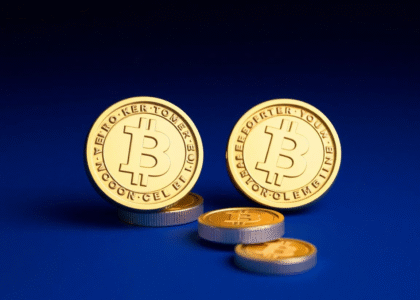The cryptocurrency frontier, once the domain of tech pioneers and fintech enthusiasts, has seen a meteoric surge in recent years. In 2021, it achieved a notable milestone – a total market capitalization of over $2 trillion. As the sphere continues its relentless expansion, new tokens are consistently entering the fray, making it a magnet for investors and traders worldwide. This guide serves as a robust framework to assess these tokens, harnessing proven methodologies and real-world examples to enable informed trading decisions.
I. Navigating the Basics
Token Essentials: Understanding Digital Assets
In the vast expanse of cryptocurrencies, a token is a digital asset that holds value and can be traded or used within a particular ecosystem. Unlike cryptocurrencies, tokens are constructed on pre-existing blockchain platforms, with Ethereum being a prime example [1].
Decoding Token Categories
Tokens come in three main variants: utility, security, and governance tokens. Utility tokens provide users access to a product or service, security tokens mirror an investment in a company or project, while governance tokens empower holders with decision-making privileges.
II. Project Appraisal
The Importance of Whitepapers
A project’s whitepaper is its blueprint, outlining its intentions, underlying technology, and goal posts. It is an indispensable resource for any potential investor.
Team Credibility
The competence and background of the development team can significantly sway a project’s trajectory. Seek teams with an impressive track record in blockchain technology, software development, or relevant fields.
Token Usability
A token’s use case is a critical parameter in its long-term valuation. A robust use case propels adoption, influencing demand and, subsequently, the token’s price. Evaluate the problem that the token intends to address and the intended market for this solution.
III. Tokenomics Breakdown
Decoding Token Allocation
Token allocation refers to the tokens’ distribution among stakeholders – the development team, investors, and the community. Balanced allocation that fosters long-term growth and discourages pump-and-dump schemes is ideal.
Understanding Token Supply
The number of tokens available plays a vital role in determining its price. Scarcity, often a result of limited supply, can inflate a token’s value. However, an extremely low supply might open doors for market manipulation. Evaluating a token requires considering both its total and circulating supply.
IV. Market Analysis
Market Capitalization
Market capitalization, the total value of all circulating tokens, offers a glimpse of a token’s market position and size compared to other cryptocurrencies. Higher market caps generally signify greater liquidity and a more mature project.
Trading Volume Insights
Trading volume, the total number of tokens traded within a set period (typically 24 hours), can be a barometer of market interest and liquidity. Increased trading volumes ease the buying and selling process for traders.
Assessing Price History
A token’s price history offers valuable insights into its performance and market sentiment. Traders should identify trends, patterns, and major events that might have influenced the price.
V. Navigating Risks and Security
Regulatory Landscape
Cryptocurrency regulations vary by jurisdiction and can significantly impact a token’s future. Traders should familiarize themselves with the regulatory environment in the project’s operational territories [2].
[2] Library of Congress. (2018). Regulation of Cryptocurrency Around the World. https://www.loc.gov/law/help/cryptocurrency/world-survey.php
Smart Contract Security
Many blockchain projects rest on the foundation of smart contracts. To evaluate a project’s security, look for audits by reputable firms or independent experts. A thoroughly audited smart contract reduces the risk of potential vulnerabilities.
VI. The Power of Community and Ecosystem
Community Engagement
A vibrant, active community is the lifeblood of a project’s success. Gauge the community’s size and engagement through social media channels, forums, and chat groups. A passionate community can catalyze adoption and contribute to the project’s overall growth.
Strategic Partnerships and Integrations
Partnerships and integrations with established entities or other projects can elevate a token’s credibility and practicality. Keep an eye out for strategic alliances that could spur growth and diversify the token’s use cases.
VII. Connecting the Dots
The process of evaluating tokens for cryptocurrency trading requires a comprehensive analysis of numerous factors. These include the project’s foundational elements, tokenomics, market indicators, associated risks, and the overall ecosystem. By taking these diverse elements into account, traders can navigate the dynamic landscape of cryptocurrencies with confidence, making informed decisions that best align with their investment goals.
In this ever-evolving world, staying abreast of new developments and trends is crucial. As digital currencies continue to reshape the economic landscape, understanding how to evaluate them effectively is an essential skill for any modern trader.
FAQs
What’s the first thing to look at when evaluating a token?
Hey! Always kick off with the token’s fundamentals. Check out its whitepaper, team, and use-case. Gotta know its core, right?
Are all tokens worth trading?
Nope! Remember, there’s loads of ‘shitcoins’ out there. Not all glitters is gold. Do your due diligence, mate.
What’s market cap and why’s it important?
Market cap = token price x circulating supply. Bigger cap often means less volatility. Helps you gauge how established a coin is in the market.
How vital is the token’s volume?
Super important! Volume gives you a peek into the token’s liquidity. High volume? Easy in, easy out.
Should I care about token utility?
Heck yes! If a token’s got a real-world use-case, it ain’t just hype. Look for utility, not just buzz.
What’s the role of community in token evaluation?
Massive! Engaged communities drive adoption. Check Telegram, Discord, and Twitter. But, watch out for artificial pump-and-dump squads.
How does tokenomics influence a coin’s value?
Tokenomics, buddy! It’s about how tokens are created, distributed, and burnt. Crucial to know how scarcity and demand might play out.
Should I be wary of whales?
For sure! Whales = big holders. They can influence price. Always good to know if a few wallets hold huge portions.
Any tools I should use for evaluating tokens?
Definitely! Dive into platforms like CoinGecko, CoinMarketCap, and Messari for data. Glassnode for on-chain analytics is a gem too.
Is it essential to know about a token’s partnerships and collaborations?
Totally! Partnerships can be bullish indicators. Shows the token’s got real-world integration and traction.
Does news and hype impact a token’s value?
Yup, FOMO and FUD can swing prices. But remember, always zoom out and look at the bigger picture. Don’t just chase the news cycle.
Any final advice for a newbie trader?
DYOR! Do Your Own Research. Don’t just ape in based on someone’s tip. Get in the weeds, understand the project, and trade safe.






